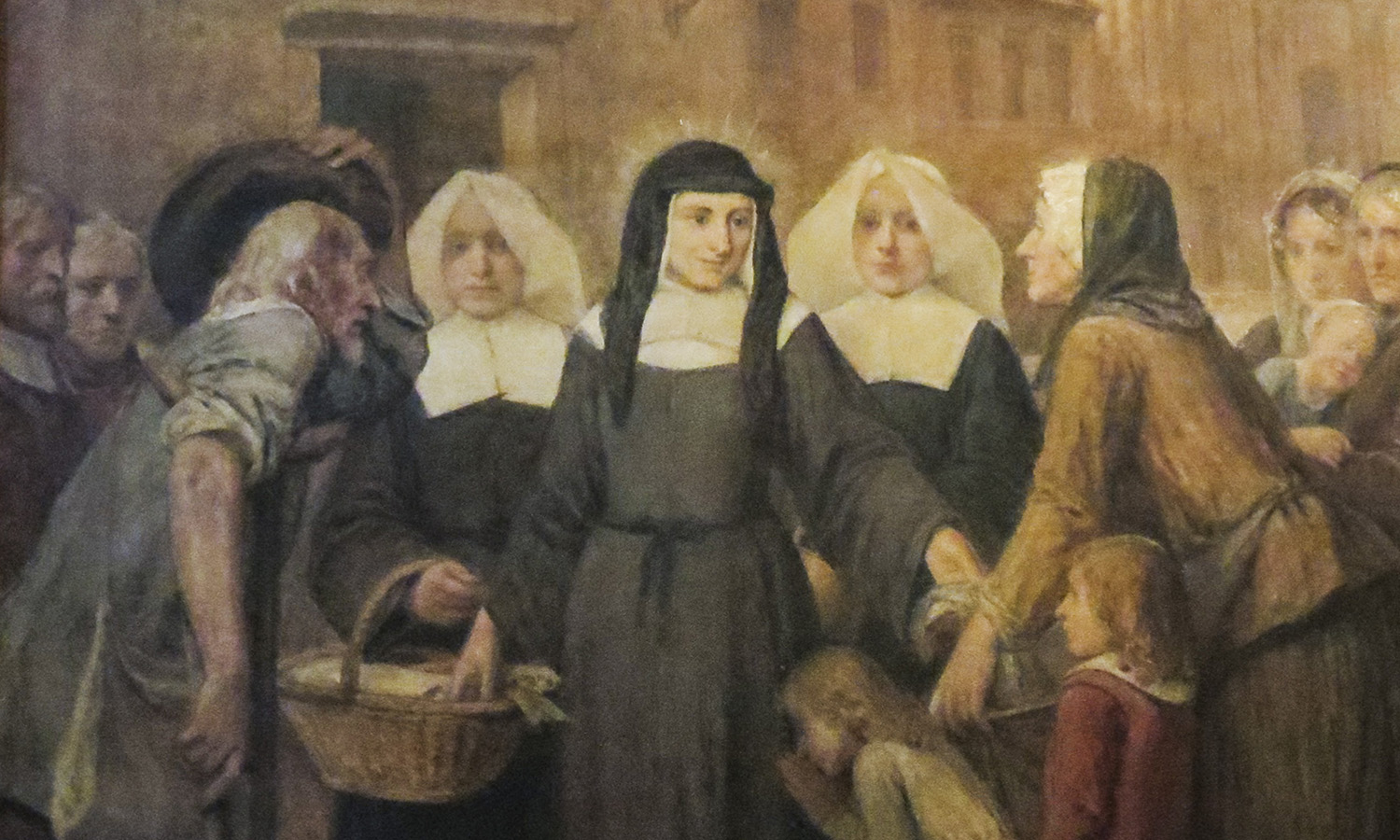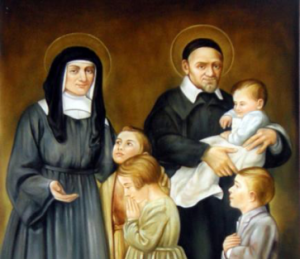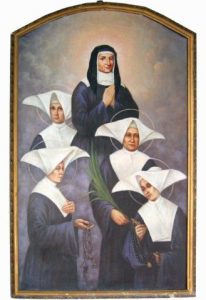
St. Louise de Marillac was a wife, mother, widow, and religious foundress. Louise was born in 1591 at Le Meux, a small village near Compiègne in northern France. Her parents were not married, and she never knew her mother. Louis de Marillac, a widower from a prominent family, declared Louise as his daughter, but not as an heir in his family. Louis’s brother was a member of the court of Queen Marie de’ Medici, and even though Louise was not a recognized member of the family, she grew up in that environment. Louis remarried, but his second wife rejected Louise as a family member because of her illegitimacy. Since a relative was a Dominican nun at Poissy, Louise was educated at the monastery there, until her father’s death when she was twelve. She then boarded with a woman who was a devout Catholic. This woman added to her previous education by teaching Louise practical skills she would need as an adult, including simple medicinal treatments.
VOCATION TO MARRIAGE
At fifteen, Louise attempted a vocation to cloistered religious life, but she was denied entrance to a Capuchin monastery in Paris. In 1613, she married Antoine Le Gras, who was a member of the court of Queen Marie. Within a year, the couple had a son, Michel. Louise devoted herself to her husband and son, and became active with the Ladies of Charity at her parish. This group of women pooled their considerable resources to directly help poor and sick people. Just eight years after they were married, Antoine came down with an incurable illness, and eventually became incapacitated and in need of constant care. Louise dedicated herself to tending to his needs, but herself fell into a state of despondency. Fortunately, the wise [St.] Francis de Sales, later named a Doctor of the Church was living in Paris at the time, and his advice was most helpful. She resolved that if Antoine died, she would not remarry, and would seek a spiritual director. She believed that the image of his face was shown to her while praying in a church. Antoine did indeed die from his illness in 1625.
VINCENT DE PAUL ENTERS HER LIFE
Fr. [St.] Vincent de Paul had been active in Paris expanding the Ladies of Charity, but because of the privileged state of the wealthy ladies who collected and administered the alms for the poor, it was clear that someone was needed who could work directly with the poor and sick without compromising her dignity. When Fr. Vincent and Louise met, she recognized him as the spiritual director whose face she had been shown. In time, he recognized her as a gracious woman of virtue with valuable life experience, who was not afraid to interact with people of crude manner and no education. She composed her own personal rule, which gave structure and balance to her daily life and included Mass, prayer, and reading, in addition to caring for her son. Fr. Vincent and Louise stayed in close touch for several years, working together to make the work of the Ladies of Charity more effective. They realized that while aristocratic ladies were good fundraisers, it was impractical for them to deal directly with the needy.
A NEW VOCATION

Louise was adept at attracting and organizing young women who were able to fill this need. She invited several of these women to live in her Paris home, where she could teach them both the skills for effectively meeting the needs of the poor, and balancing daily duties with the need for spiritual grounding. Thus began the founding of the Daughters of Charity. The women began by caring for the unfortunates at Paris’s Hotel-Dieu hospital. Under the guidance of Fr. Vincent, Louise made her vows in 1634. She wrote a Rule for the group, and continued her successful recruiting efforts. The good reputation of the women became well known, causing them to expand their ministry beyond Paris. Under the guidance of Fr. Vincent, the women in Louise’s young community also professed vows, and their unique grey woolen habit and grand white cornette (headpiece) became a common sight at many French hospitals. This habit was chosen to resemble the attire of a northern French countrywoman. In 1655, formal approval of the new order was granted, placing them under the direction of Fr. Vincent and Louise as the Mother Superior. Under her leadership, the charism of the community expanded to eldercare, orphanages, mental health care, and prison ministry. Mother Louise traveled and labored all over France, and eventually established forty communities. She died March 15, 166o in Paris just months before her great friend St. Vincent de Paul.

St. Louise de Marillac brought a very effective balance of prayer and work as the foundation of her community. Compelled by charity to help those who most needed her, she spent her long widowhood in loving service. She was canonized in 1934 by Pope Pius XI. Her mortal remains are venerated at the motherhouse of the Daughters of Charity in Paris, and she was named patroness of social workers by Pope St. John XXIII in 1960. Her feast day is May 9.
